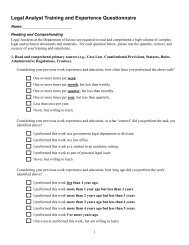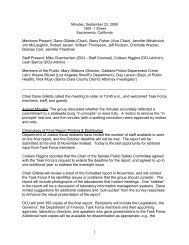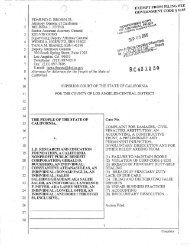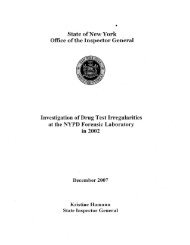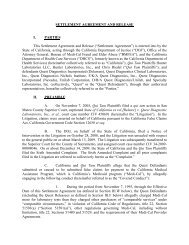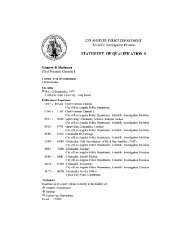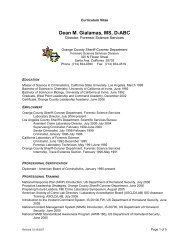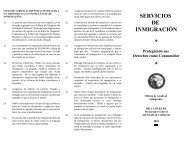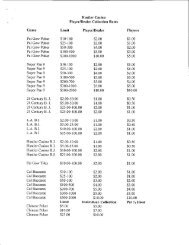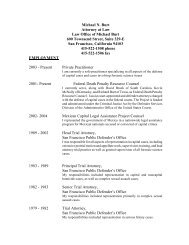cards are
cards are
cards are
You also want an ePaper? Increase the reach of your titles
YUMPU automatically turns print PDFs into web optimized ePapers that Google loves.
The following chart outlines the rules regarding player/dealer drawing<br />
procedure. After all players have exercised their rights to draw additional<br />
<strong>cards</strong>, the player /dealer will receive his/her second card.<br />
. Player/ dealer may draw as many <strong>cards</strong> as permitted.<br />
HARD 17<br />
SOFT 17 NONE<br />
AND ABOVE OR LESS<br />
RULES & STANDARDS FOR THE PLAYER/DEALERPOSITION<br />
The PlayerIDealer position occupies the "bank" position at the gaming table. The<br />
PlayerIDealer places a set amount of money on the table and his/her hand plays<br />
against all the player's hands on the table. The PlayerIDealer position must<br />
rotate in a continuous and systematic fashion, and cannot be occupied by a<br />
person for more than two consecutive hands. There must be an intervening<br />
PlayerIDealer so that one person cannot continually occupy the PlayerIDealer<br />
position within the meaning of Oliver v. Countv of Los Angeles (1998) 66 Cal.<br />
App. 4th 1397, 1408-09. And in addition to the meaning of AB 1416 (the Wesson<br />
Bill) which added section 330.11 to the California Penal Code, relating to<br />
licensed gambling establishments and any future regulatory guidelines from the<br />
California Department of Justice, Division of Gambling Control, with respect to<br />
the operation of a controlled game featuring a PlayerIDealer position.



